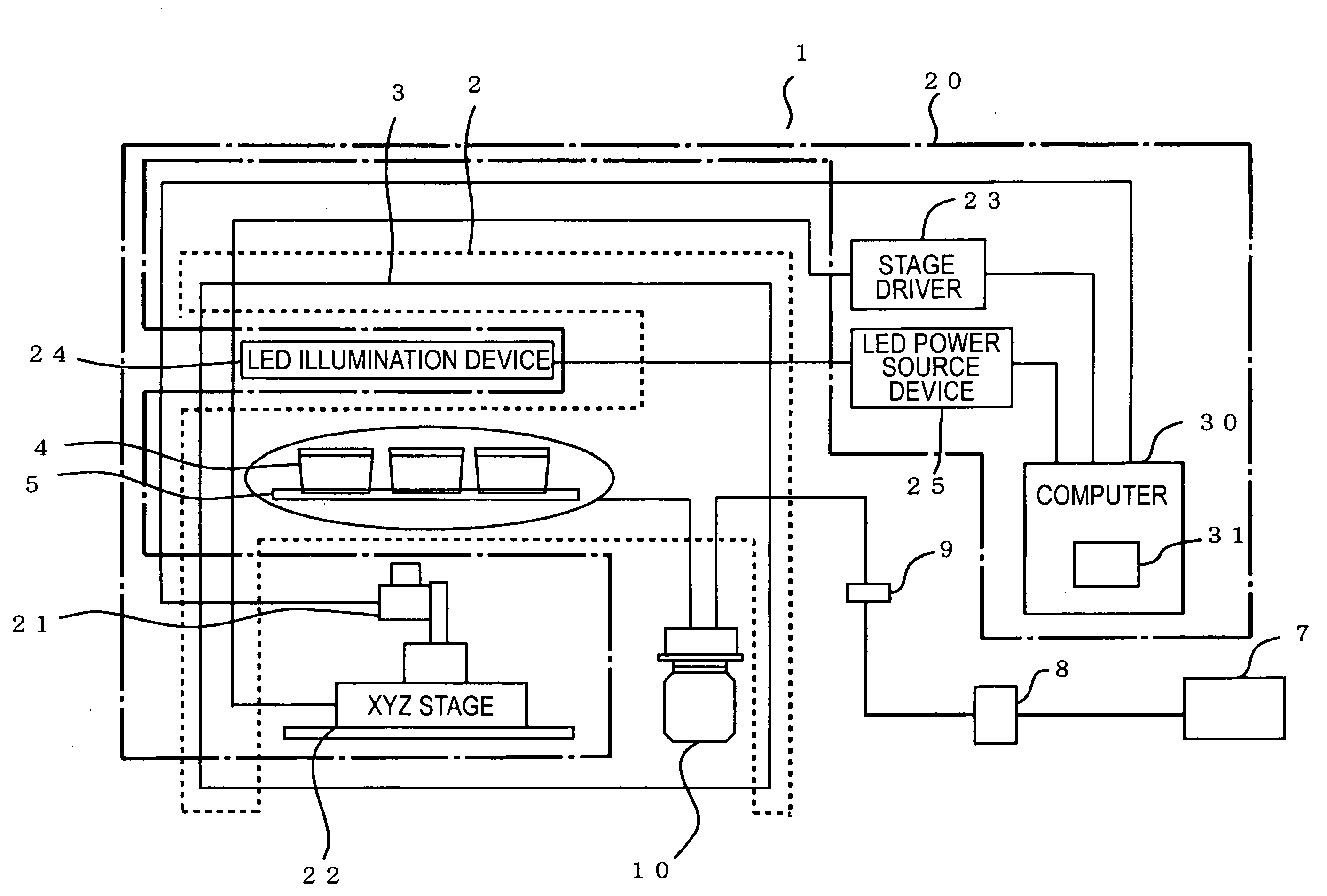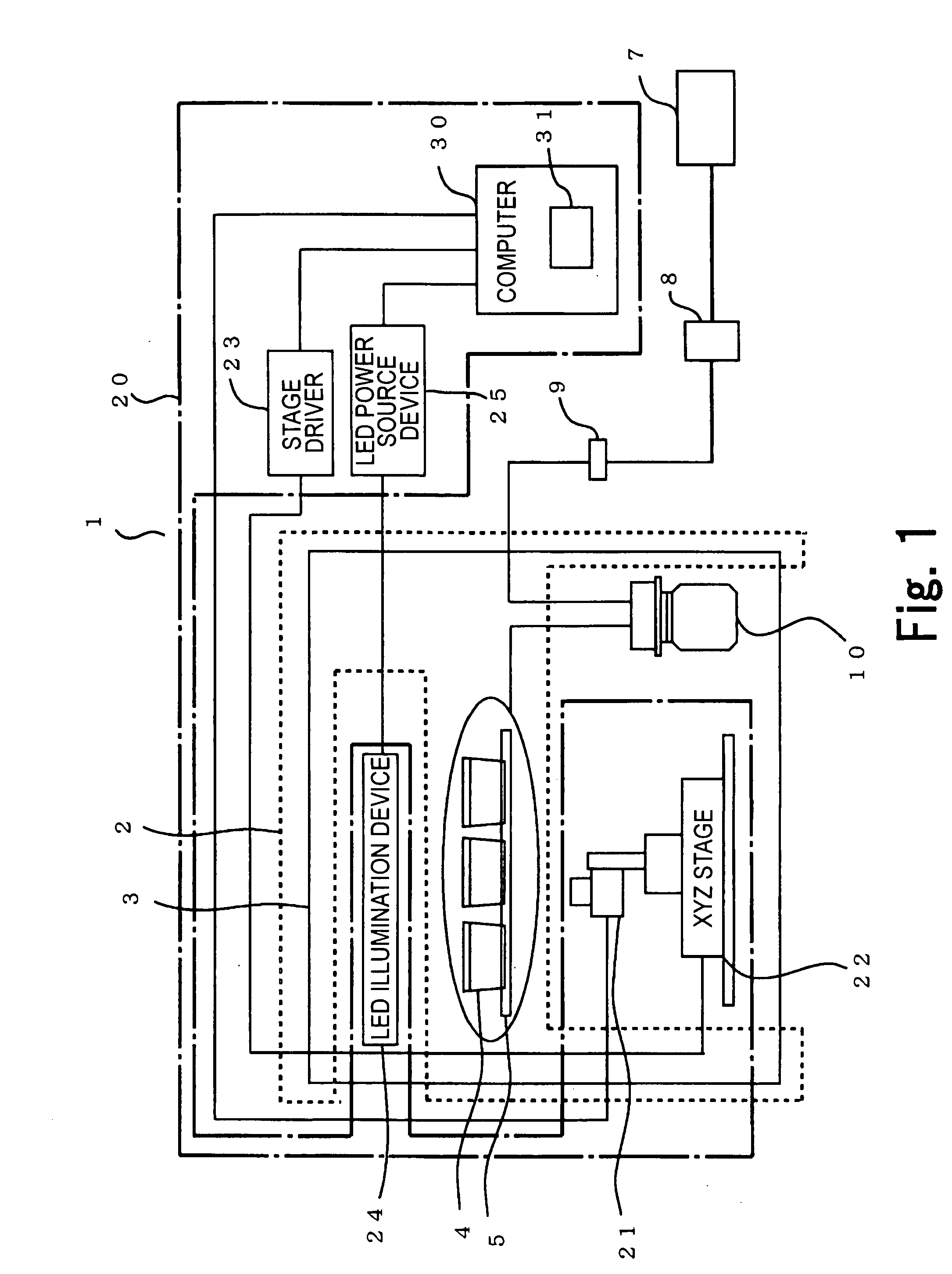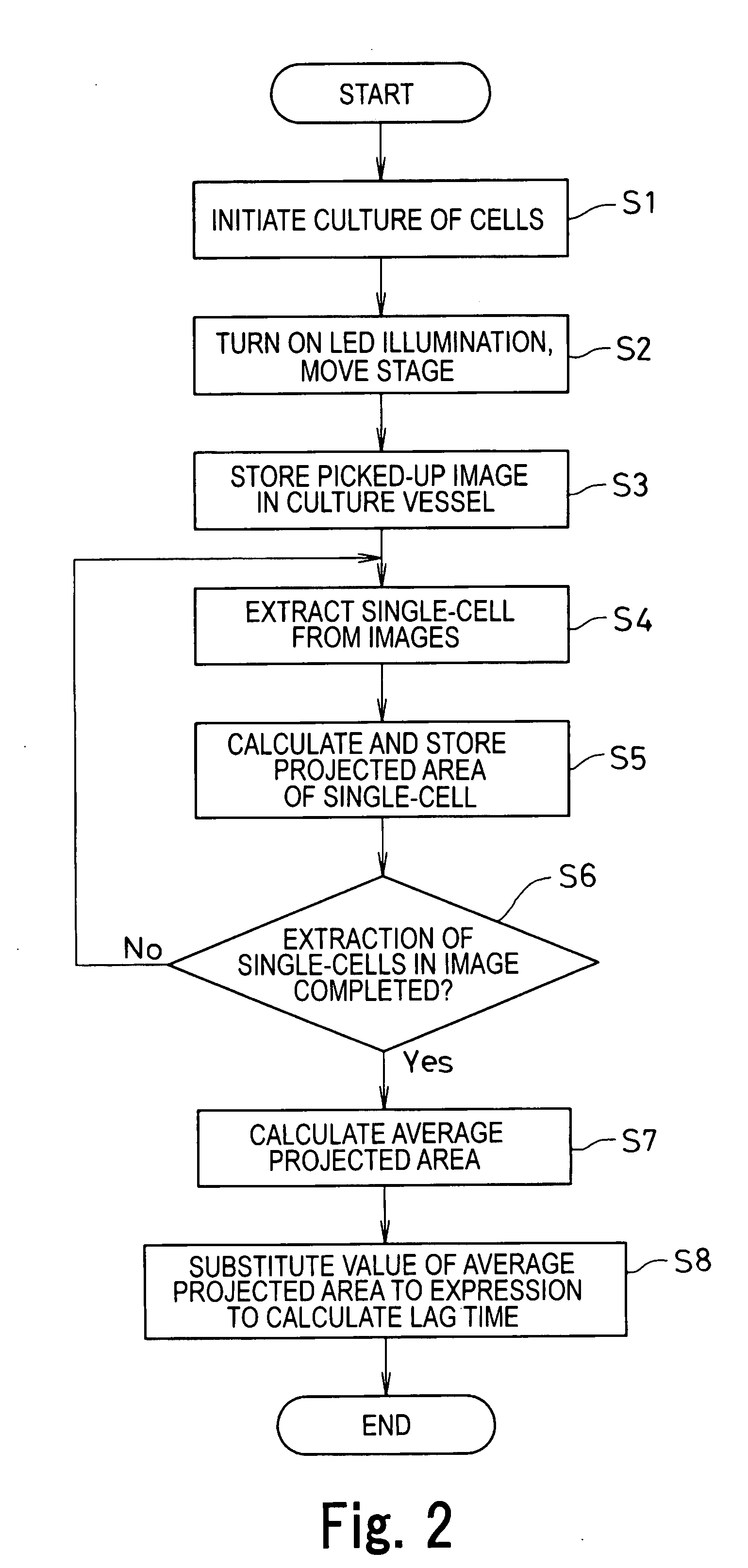Cell Culture Evaluation System, Cell Culture Evaluation Method, and Cell Culture Evaluation Program
a cell culture evaluation and cell culture technology, applied in the field of cell culture evaluation system, cell culture evaluation method, cell culture evaluation program, can solve the problems of insufficient cell proliferation of sampled cells, difficult to measure the number of viable cells,
- Summary
- Abstract
- Description
- Claims
- Application Information
AI Technical Summary
Problems solved by technology
Method used
Image
Examples
first embodiment
[0087]Referring firstly to a flowchart shown in FIG. 2, a step of calculating the lag time from an average projected area of the cells on culture will be described as a
[0088]As shown in FIG. 2, the cells suspended in the culture medium are inoculated to the culture vessel 4 (shown in FIG. 1) of which culture surface is immobilized with an antibody for stimulating the cells for proliferation and the culture is initiated (Step S1). The antibody to be immobilized is selected adequately from the cells to be inoculated. For example, when culturing the LAK cells, an anti CD3 antibody is immobilized.
[0089]As a method of immobilizing the antibody, for example, the anti CD3 antibody is dissolved in physiologic saline or the like to obtain anti CD3 antibody solution, then the obtained solution is immersed on the culture surface of the culture vessel, and is kept stand still at a room temperature. A preferable time span to keep it stand still is on the order of one hour. Then, the culture surf...
second embodiment
[0104]Referring now to a flowchart in FIG. 7, a step of calculating the minimum doubling time from the increasing rate of the non-single-cells which form cell aggregates will be described as a
[0105]The cells suspended in the culture medium are inoculated to the culture vessel 4 of which culture surface is immobilized with an antibody for simulating the cells for proliferation to initiate the culture (Step S40). The computer 30 outputs control signals to the LED power source device 25 after having elapsed 24 hours, 48 hours, and 72 hours from the initiation of the culture to illuminate the LED illumination device 24 positioned right above the CCD camera 21 via the culture vessel 4, so that the images of cells and non-single-cells which form a cell aggregate may be analyzed easily by illuminating from above the culture vessel 4. The computer 30 also controls the stage driver 23 to move the XYZ stage 22 so that the distal end portion of the lens of the CCD camera 21 is located, for exa...
third embodiment
[0129]Although the estimation and evaluation of the lag time and the minimum doubling time as the proliferation potential of the cells has been described thus far, a step of determining whether or not the inoculated cell population is stimulated for proliferation will now be described referring to a flowchart shown in FIG. 13 as a If whether or not the inoculated cell population is stimulated for proliferation can be determined automatically, objective and adequate determination for transferring the cells on cell culture from the culture vessel for stimulating the same for proliferation to a vessel for proliferation for the next stage is achieved.
[0130]The determination of whether or not the inoculated cell population is stimulated for proliferation is performed firstly by acquiring the images of the cell population on culture, then extracting the non-single-cells in the images, and calculating the ratio of the non-single-cells and, more specifically, by comparing the calculated ra...
PUM
| Property | Measurement | Unit |
|---|---|---|
| time | aaaaa | aaaaa |
| temperature | aaaaa | aaaaa |
| culture time | aaaaa | aaaaa |
Abstract
Description
Claims
Application Information
 Login to View More
Login to View More - R&D
- Intellectual Property
- Life Sciences
- Materials
- Tech Scout
- Unparalleled Data Quality
- Higher Quality Content
- 60% Fewer Hallucinations
Browse by: Latest US Patents, China's latest patents, Technical Efficacy Thesaurus, Application Domain, Technology Topic, Popular Technical Reports.
© 2025 PatSnap. All rights reserved.Legal|Privacy policy|Modern Slavery Act Transparency Statement|Sitemap|About US| Contact US: help@patsnap.com



